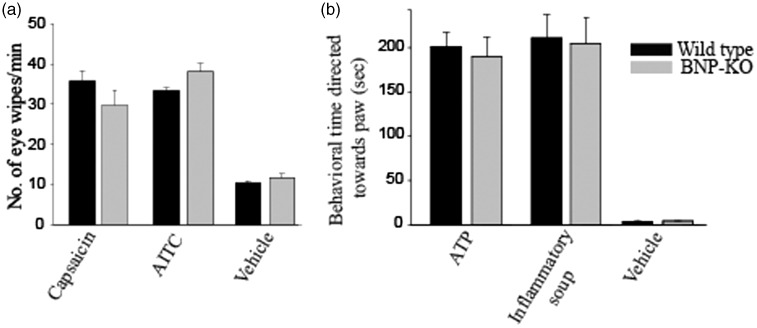Figure 1.
BNP-KO mice do not exhibit any significant change upon exposure to chemical algesics compared to wild type. (a) 100 µM capsaicin and (b) 10 mM of AITC were applied directly onto the surface of the eyes in both wild-type (black bars) and BNP-KO mice (gray bars), and eye-wiping behavior was observed. Chemical algesia was introduced by (c) intraplantar injection of 1 nmol of ATP or (d) a mixture of compounds referred to as “inflammatory soup” (see Materials and Methods section). PBS was used as a vehicle control. No significant decrease in algesic response was observed in BNP-KO mice compared to wild-type control. Data are mean ± SEM, n ≥ 5 animals; Student’s t test was used to measure significant difference between genotypes. AITC: allyl isothiocyanate; ATP: adenosine 5′-triphosphate; BNP-KO: brain natriuretic peptide knockout.

